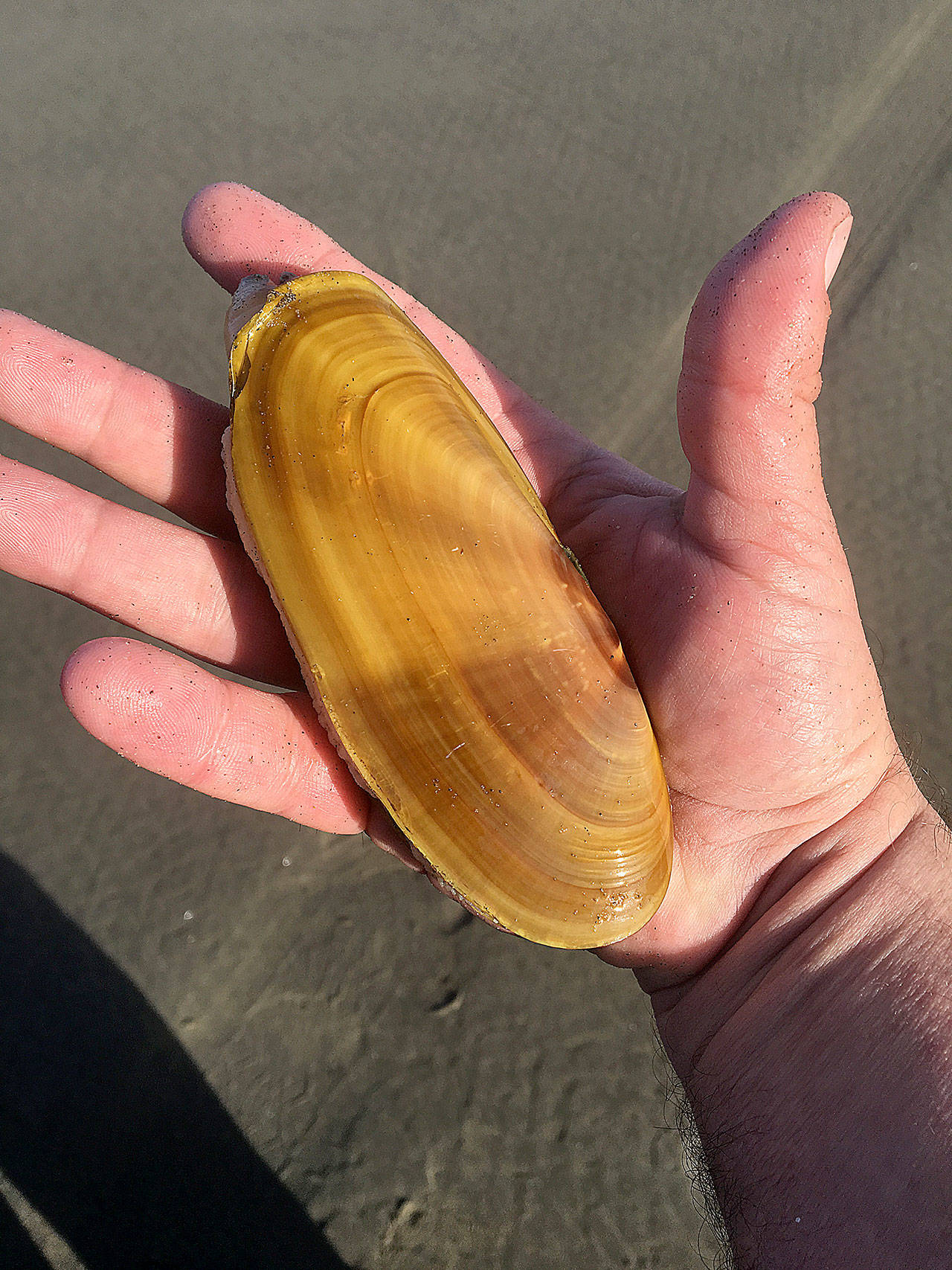A week of razor clam digs has been approved at Copalis and Mocrocks beaches starting Saturday, but tentatively scheduled digs at Twin Harbors and Long Beach remain tentative pending further marine toxin tests.
State shellfish managers with the state Department of Fish and Wildlife approved the dig on evening low tides after marine toxin tests showed the clams are safe to eat on Copalis and Mocrocks beaches.
The digs at Twin Harbors and Long Beach require further tests, according to state shellfish manager Dan Ayres.
“In the last few days, we’ve seen increasing levels of the algae that can cause domoic acid in ocean water at Long Beach and Twin Harbors,” said Ayres. “Our first priority is safety, and we, working alongside the Department of Health, are reserving judgment on opening of these areas in order to ensure safety for all those who enjoy this activity.”
Additional domoic acid tests conducted by the Department of Health will provide a final determination on those beaches by Friday morning, said Ayres, who said an announcement on whether these beaches have also been approved will be made that day.
The upcoming dig is for the following dates and low tides as of Tuesday.
• Oct. 26, Saturday, 5:59 pm, 0.0 feet; Copalis
• Oct. 27, Sunday, 6:47 pm, -0.8 feet; Mocrocks
• Oct. 28, Monday, 7:33 pm, -1.2 feet; Copalis
• Oct. 29, Tuesday, 8:18 pm, -1.4 feet; Mocrocks
• Oct. 30, Wednesday, 9:03 pm, -1.2 feet; Copalis
• Oct. 31, Thursday, 9:50 pm, -0.8 feet; Mocrocks
• Nov. 1, Friday, 10:38 pm, -0.2 feet; Copalis
No digging is allowed before noon for allowed digs, where low tide occurs in the evening.
A list of proposed razor clam digs on Long Beach, Twin Harbors, Copalis and Mocrocks beaches through December is available online at wdfw.wa.gov. Final approval of the tentatively scheduled openings of all digs depends on whether results of marine toxin tests show the clams are safe to eat.
Additional safety considerations are important to those who engage in digs near dusk and at night.
“Diggers want to be sure to come prepared with good lighting devices and always keep an eye on the surf, particularly at this time of year when low tides come at dusk and after dark,” said Ayres.
Fish and Wildlife is also asking for razor clam fans around the state to weigh in on the perennial question: Which is better, clam or shovel? To register support for a favored digging method, clam diggers can post a photo or video, complete with hashtag #TeamClamShovel or #TeamClamGun on any social media before the end of the season.
Under state law, diggers at open beaches can take 15 razor clams per day and are required to keep the first 15 they dig.
Each digger’s clams must be kept in a separate container.


